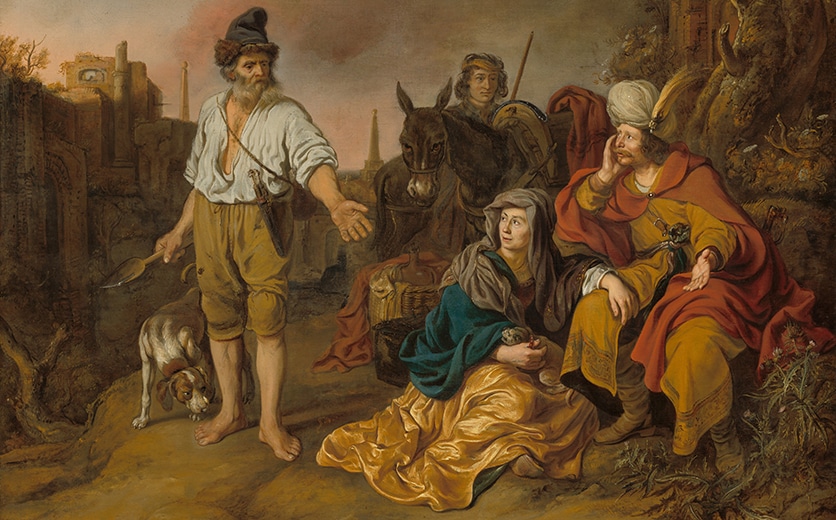The story of the Levite’s concubine in Judg 19–20 begins with rape and murder, proceeds to dismemberment, and ends with warfare, mass kidnapping, and genocide.
Who is the Levite’s concubine, and what happens to her?
The main character in this narrative has no name. She is simply described as a pilegesh, a Hebrew word usually translated as “concubine” or “secondary wife.” The text says that her husband is “a Levite,” which is an ethnic descriptor; he, too, does not have a name.
As the story goes, the Levite and his concubine are traveling and stay overnight with an old man in Gibeah, a town located in the land of Benjamin. While they are there, the men of the town demand to rape the Levite. The old man offers his own virgin daughter and the Levite’s concubine instead. The crowd refuses, but the concubine is eventually pushed outside and raped by the crowd. In the morning, the Levite finds the concubine’s body, puts it on his donkey, and travels home. When he reaches home, the Levite cuts the concubine’s body into twelve pieces and sends one to each of the twelve tribes of Israel, summoning the tribes to war against Benjamin (itself one of the tribes) for what the Benjaminites have done to him.
What is the point of this narrative?
While horrifying, the events of Judg 19–20 are not unique in the Hebrew Bible. The Bible contains a number of stories of rape, including that of Dinah (Gen 34), Tamar (2 Sam 13), and David’s concubines (2 Sam 16). A key parallel to Judg 19 is Gen 19, the story of the destruction of Sodom. In that story, male divine messengers come to the city and are threatened with rape by its inhabitants. One man, Lot, offers his own virgin daughters in exchange for the safety of the messengers, but the crowd refuses. In response, God destroys the city.
While women experience or are threatened with rape in these stories, the men (fathers and husbands) associated with them are perceived as the real victims. This is also true in Judg 19, where the rape of the concubine is framed as a harm done to her husband, not to the woman herself, even as she ends up dead. The text is relatively uninterested in male responsibility—it is not specified in the original Hebrew version who pushes the concubine out of the house or whether she is even dead when her husband finds and dismembers her. (The Greek translation, known as the Septuagint, adds that she is already dead.) Instead, the focus is on the failure to show hospitality. In addition, rape and rape threats are used to establish dominance over and against male foreigners.
The gender violence in Judges does not end with the concubine’s death. As part of the war, the other eleven tribes swear not to intermarry with the tribe of Benjamin (Judg 21:1). After the war, Benjamin is threatened with extinction because they have no potential wives. In response, the Israelite tribes come up with a solution: they kidnap four hundred virgin women from Jabesh-gilead, an Israelite town that refused to participate in the war. The Benjaminites also kidnap virgin women from a festival at Shiloh, an Israelite town north of Jerusalem. Both groups of kidnapped women are forced to marry male Benjaminites. One act of rape and murder has become many.
Bibliography
- Graybill, Rhiannon. “Sad Stories and Unhappy Reading.” Pages 144–70 in Texts after Terror: Rape, Sexual Violence, and the Hebrew Bible. Oxford University Press, 2021.
- Paynter, Helen. Telling Terror in Judges 19: Rape and Reparation for the Levite’s Wife. Rape Culture, Religion and the Bible 2. Routledge, 2020.
- Trible, Phyllis. “An Unnamed Woman: An Extravagance of Violence.” Pages 64–91 in Texts of Terror: Literary-Feminist Readings of Biblical Narratives. Overtures to Biblical Theology. Fortress, 1984.





